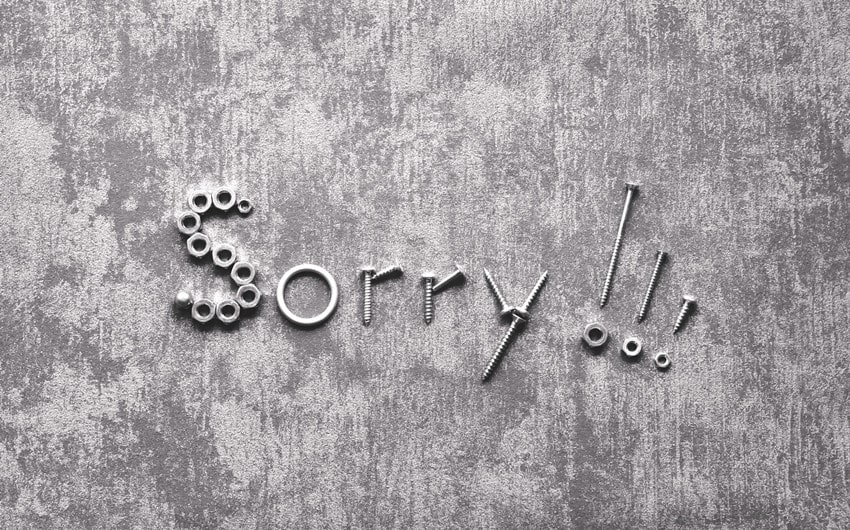Apology Letter Tips to Help You Mend Broken Connections
Saying sorry can be tough, but sometimes it’s exactly what’s needed to make things right. Whether it’s a misunderstanding with a friend or a mistake at work, the right words can make all the difference. An apology letter allows you to express your feelings, acknowledge your actions, and take responsibility, all while giving the other person space to process. It can help repair trust and rebuild relationships.
In this guide, we’ll walk you through how to write an apology that feels sincere, meaningful, and thoughtful, so you can confidently set things straight.
Why Writing an Apology Letter Matters
Writing an apology letter matters because it provides a formal way to acknowledge your mistake while showing the other person that you genuinely care about their feelings.
In face-to-face apologies, emotions can sometimes get in the way, but a written letter gives you the opportunity to thoughtfully express your regret. It shows that you’ve taken the time to reflect on your actions, and it allows the other person to process your apology without the pressure of an immediate response. This can lead to a more open, honest conversation later, strengthening your relationship.
Moreover, an apology letter can also serve as a form of closure for both parties. By putting your apology in writing, you’re not only admitting to your mistake, but you’re also taking responsibility and offering a path toward healing. Whether it’s a personal relationship or a professional setting, a well-written apology letter helps clear the air and shows maturity. It’s a powerful tool that can rebuild trust and show respect, allowing both sides to move forward on better terms.

Tips for Writing a Sincere Apology Letter
Acknowledge the Mistake Clearly
The first step in writing a sincere apology letter is to acknowledge the mistake directly. When you specify what you’re apologizing for, it shows the other person that you’ve taken the time to reflect on your actions and understand their impact. Avoid vague statements like “I’m sorry for what happened” and instead say, “I’m sorry for not showing up to our meeting on time.” This clarity leaves no room for misinterpretation, making the apology more effective and heartfelt.
A detailed acknowledgment of the mistake helps build trust because it confirms to the other person that you’re aware of what went wrong. It also allows them to feel heard and understood, which is a crucial part of healing any relationship. Skipping this step or glossing over the mistake can make the apology feel incomplete, leaving the issue unresolved. Being specific about your actions is the foundation of any meaningful apology.
Take Full Responsibility Without Excuses
Taking full responsibility for your actions is essential in making your apology feel genuine. While it’s tempting to explain why something happened, try to avoid turning your explanation into an excuse. Instead of saying, “I was late because traffic was bad,” simply acknowledge that being late was your responsibility. This demonstrates maturity and honesty, qualities that help to repair damaged relationships.
By owning your mistake, you show that you’re committed to personal growth and self-awareness. This doesn’t mean you ignore external factors, but rather that you prioritize the impact your actions had over the reasons behind them. Deflecting blame onto others or circumstances can dilute the strength of your apology and make it seem like you’re trying to dodge accountability. Full responsibility helps restore trust and paves the way for resolution.
Express Regret and Show Empathy
A key element of any apology letter is expressing genuine regret. This goes beyond simply saying, “I’m sorry” and delves into showing that you understand the emotional toll your actions may have caused. When you express regret, you demonstrate that you feel bad not only for the mistake but for the hurt it caused the other person. This emotional connection is often what turns a standard apology into a heartfelt one.
Showing empathy is equally important. Empathy involves acknowledging the feelings of the person you’ve hurt, making them feel understood. Statements like, “I can see how my actions upset you, and I regret making you feel that way,” show that you’re not just apologizing for the sake of it but because you genuinely care about their feelings. Understanding and acknowledging the emotional aspect of the situation helps repair the relationship on a deeper level.
Offer to Make Things Right
A sincere apology often includes offering to make things right, even if it’s not always possible to fix the mistake. Offering amends could be as simple as asking what you can do to help resolve the situation or making specific commitments to avoid repeating the behavior. For example, if you missed an important deadline at work, you could offer to take on additional tasks or ensure that it won’t happen again.
The act of offering to fix the problem shows a willingness to take responsibility beyond words. It demonstrates that you are actively looking to improve the situation and are committed to making up for your actions. This can go a long way in rebuilding trust, as it provides concrete evidence of your desire to right the wrong and restore the relationship.
Keep the Letter Concise and Heartfelt
When writing an apology letter, it’s important to be concise. While you want to cover all the key points, you don’t need to write pages of explanation. Lengthy apologies can sometimes feel insincere or self-indulgent. Instead, focus on clearly communicating your apology and your intention to make things right, without unnecessary elaboration. Short, meaningful letters often resonate more than long-winded explanations.
However, being concise doesn’t mean being cold or overly formal. You should still aim to write with warmth and sincerity. Choose words that come from the heart, but avoid being overly dramatic or exaggerated. A simple, heartfelt message is often more powerful than a grand, complex one. The key is to balance brevity with emotion, ensuring your apology is both genuine and to the point.
Sample Apology Letters
Apology to a Friend for a Misunderstanding
Dear [Friend’s Name],
I want to sincerely apologize for the misunderstanding we had the other day. I realize now that my words came across in a way I didn’t intend, and I can see how that hurt your feelings. I never meant to upset you, and I regret not being clearer in my communication. I take full responsibility for the mix-up, and I’m truly sorry for any pain I caused.
Our friendship means a lot to me, and I want to make sure we get past this. If there’s anything I can do to make it right, please let me know. I’m committed to learning from this and being more mindful in the future. Thanks for being patient with me—I hope we can move forward from this.
Warmly, [Your Name]
This example shows how to address a personal conflict with a friend. It acknowledges the specific issue, takes responsibility, and offers to make amends, all while maintaining a warm, caring tone. The letter emphasizes the importance of the friendship and seeks a way to repair the damage.
Apology in a Professional Setting
Dear [Colleague’s Name],
I’m writing to apologize for missing the deadline on our recent project. I understand that this caused a delay in the team’s progress, and I take full responsibility for my oversight. I should have been more diligent in managing my time, and I deeply regret any inconvenience this has caused you and the team.
Moving forward, I will ensure that this doesn’t happen again. I’ve already taken steps to better manage my schedule and stay on top of deadlines. If there’s anything I can do to help get us back on track, please let me know. I value our collaboration, and I hope to restore your trust.
Best regards,
[Your Name]
In a professional setting, it’s crucial to take responsibility without making excuses. This letter is straightforward, acknowledges the impact of the mistake, and offers a solution for moving forward. The tone remains respectful and focused on restoring trust and productivity in the workplace.
Apology to a Partner or Loved One
Dear [Partner’s Name],
I want to say how sorry I am for the way I acted the other night. I realize now that I was completely out of line, and my words were hurtful. You didn’t deserve to be treated that way, and I’m deeply regretful for losing my temper. I understand that I hurt your feelings, and I’m truly sorry for that.
You mean so much to me, and I want to do better. I’ll make sure to work on communicating more calmly, even when I’m frustrated. I don’t want this to come between us, and I’ll do whatever it takes to make things right. Please know that I’m committed to growing and being a better partner for you.
With love,
[Your Name]
This example highlights how to approach a more personal and emotional situation. It emphasizes regret, acknowledges the emotional impact on the partner, and expresses a commitment to change. The tone is warm and loving, focusing on repairing the relationship and moving forward together.
When to Send an Apology Letter
Timing Is Crucial
Knowing when to send an apology letter is just as important as what you say in it. The timing of your apology can significantly impact how it’s received. If you send it too soon, the person may not have had enough time to process their emotions and could feel like you’re rushing them to forgive you.
On the other hand, if you wait too long, the hurt might deepen, and your apology might come across as insincere or too late to matter. Ideally, you should send an apology letter after you’ve had a moment to reflect on the situation, but before too much time has passed. It shows that you’ve taken time to think things through but still care enough to address the issue promptly.
Apologizing in writing can also be more appropriate in situations where face-to-face conversations are difficult, either due to distance or emotions running too high. A letter allows both parties to express their feelings without the pressure of an immediate response. In this way, it can help de-escalate the situation, giving both you and the recipient the space needed to communicate effectively and calmly.
Situations That Call for an Apology Letter
An apology letter is most effective when verbal apologies either aren’t possible or may not be enough. For instance, in professional settings where formal communication is required, a written apology can demonstrate professionalism and thoughtfulness.
If you’ve made a mistake at work, whether it’s missing a deadline or miscommunicating with a colleague, an apology letter shows that you’re taking the issue seriously. It also provides a written record of your commitment to making things right, which can be helpful in maintaining or restoring professional relationships.
In personal relationships, an apology letter can also be useful when emotions are running high, and it’s difficult to express yourself properly in person. Writing allows you to organize your thoughts, ensuring that your apology is clear, sincere, and free from emotional outbursts that can sometimes happen during face-to-face discussions.
It’s especially helpful when dealing with sensitive issues, as it gives the recipient time to process your words without feeling pressured to respond immediately. This method can lead to more productive and healing conversations later on.







